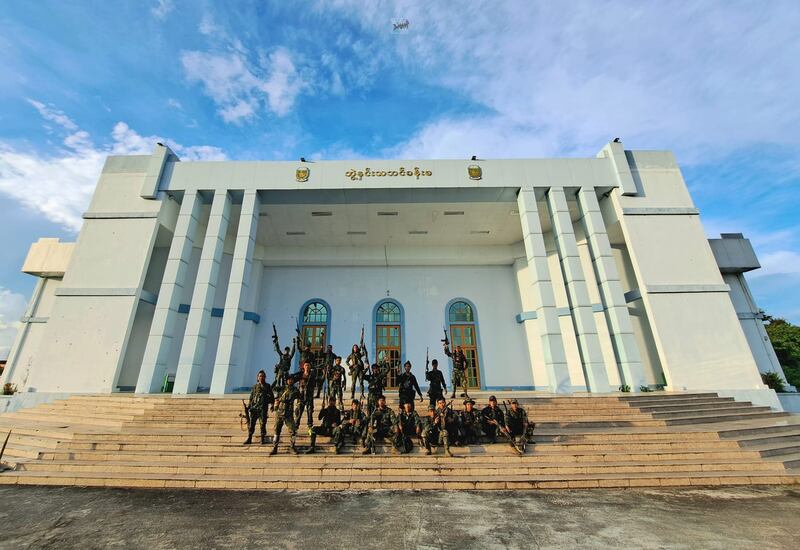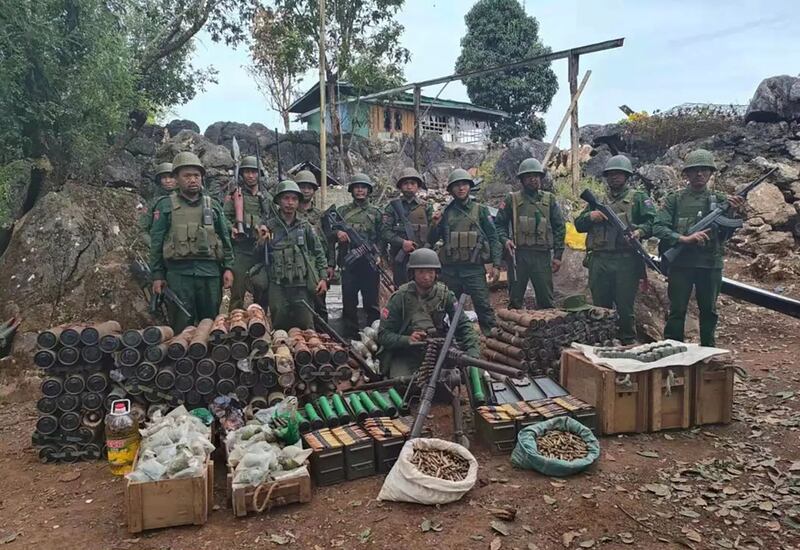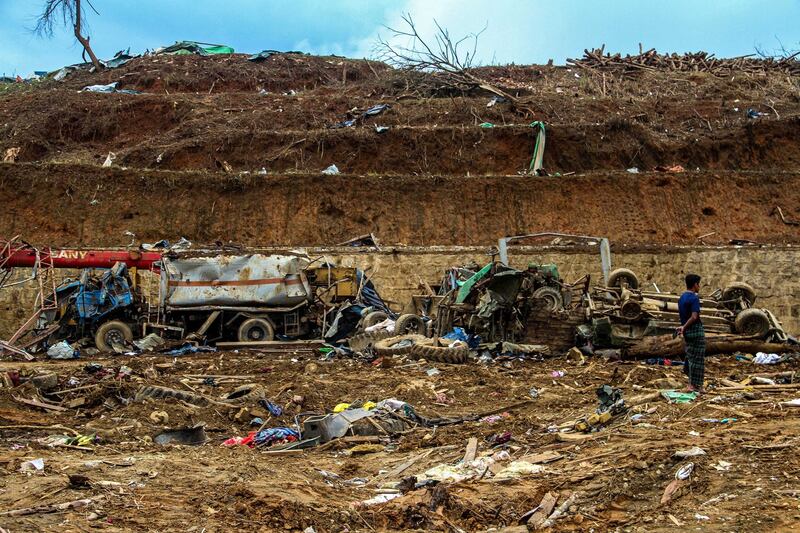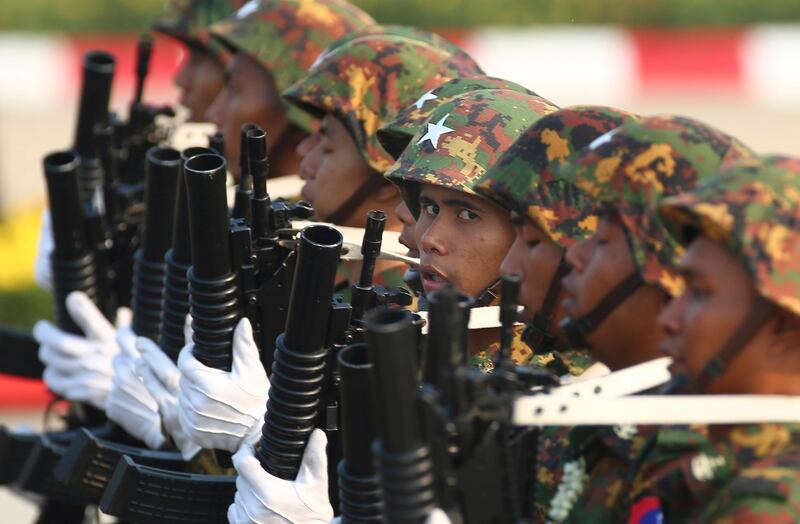The Three Brotherhood Alliance’s Operation 1027 in northern Shan State has caused a contagion effect, with its sweeping victories since late October followed by major gains by ethnic resistance organizations across Myanmar.
Since the country's founding in 1948, the military has never suffered such significant and widespread battlefield setbacks. Despite having seized power in a coup d'état in February 2021, Myanmar's military has never been able to consolidate power. But now, it looks like the beginning stages of their total defeat, with plummeting morale amongst the rank and file.
Operation 1027 continues across Shan State with the Three Brotherhood Alliance -- , which includes the Ta’ang National Liberation Army, (TNLA) the Myanmar National Democratic Alliance Army (MNDAA), and the Arakan Army -- and some people’s defense forces under the National Unity Government (NUG) having taken nine towns, over 160 military camps, and now controlling key roads.
Opposition forces have seized abandoned armor, artillery, and a large cache of small arms and ammunition. And army attempts to supply their isolated forces by air have had little success with opposition forces often recovering the supplies.

The Myanmar National Democratic Alliance Army (MNDAA) is currently pushing towards their former headquarters in Laukkaing, which they lost in 2009. Ironically, the commander of Myanmar's military forces in that 2009 battle was none other than junta leader Min Aung Hlaing.
Radio Free Asia has reported that a second battalion of some 120 men has laid down their arms in Shan State. The first light infantry battalion to do so, which included 41 men, took place on October 30, 2023.
Authorities in Naypyitaw are so concerned about the total loss of Kokang Special Autonomous Zone, that they replaced the head of the local allied Border Guards Force that was established in 2009, Myint Swe, with Brigadier-General Tun Tun Myint of the northeastern command.
But beyond that the military is unable to do little other than barrage the region with long-range artillery and aerial bombardments. Despite Min Aung Hlaing’s vow to mount a counter offensive, the military is short on manpower, helicopter lift capability and is facing crumbling morale.
Contagion Effect
The Kachin Independence Army has joined the fray, capturing a military base in Kutkai, in northern Shan state, where they claim 30 soldiers were killed.
There are ongoing encounters between them and military regime forces in Kachin. With the roads contested, the military is now dependent on ferrying in men and supplies.
The fighting has significantly expanded in the past week. Karenni forces launched a parallel offensive, Operation 1111, in Kayah state. They have seized 20 military outposts in 6 days of fighting.
But most significantly, they are in the middle of an assault on Loikaw. The city of 50,000, is the first provincial capital that is at risk of falling to opposition forces.
Karenni Nation Defense Forces (KNDF) have claimed to have killed 110 soldiers and taken 38 prisoners of war. Footage spread across social media shows KNDF personnel taking the surrender and providing medical care for soldiers at the University in Loikaw.

The situation in Chin state has been more fluid. Military forces drove some Chin fighters into India’s Mizoram state, but some dozen were returned to military custody by the Assam Rifles. Days later, military personnel found themselves in Mizoram where they had fled. In this case, the Assam Rifles helicoptered them back to safety in Myanmar.
The military has responded with airstrikes; one of which killed eight children when a bomb fell on the house being used as a makeshift school.
The situation in Rakhine has the potential to be the most costly to the SAC.
The Arakan Army (AA) and the military broke their 2020 ceasefire following the coup, but both sides quickly concluded that an escalation of violence was not in their best interest.
A second ceasefire was reached in November 2022. This was an enormous disappointment for the National Unity Government, which sought a new front against the junta.
Breakdown in Rakhine
Yet the involvement of the Arakan Army in northern Shan state, where they are a member of the Three Brotherhood Alliance, has led to a breakdown in the peace in Rakhine state.
The military has deployed several navy ships to the region along with additional personnel, but both failed to serve as a deterrent. The AA broke the ceasefire on November 13.
In the first 24 hours of commencing offensive operations, the AA seized over 40 military and police outposts. Some 26 police surrendered. In many cases police have abandoned remote posts to consolidate in the larger towns.

The AA took the town of Pauktaw, their first. The military has responded as they can, with aerial bombardment and indiscriminate fire from their naval vessels that has led to the death of innocent civilians and over 20,000 displaced people.
There are reports that several ministers from the Rakhine State Military Council have already fled the capital Sittwe, for fear of being arrested by the AA. The AA can be expected to quickly fill the political vacuum.
In Sagaing -- where a joint operation between the KIA, the AA, the All Burma Students' Defense Force, and other PDFs led to the capture of Kawlin -- the first of 330 nationwide township capitals to fall, has now spread to Tigyaing township. The Irrawaddy reported that 20 civilians were killed in regime airstrikes.
Panic setting in
The panic must be setting in in Naypyitaw. There are already reports of families of officers and other regime officials trying to leave the fortress capital, which is only 120 km away from the fighting.
There are also reports that government officials are resigning en masse in order to avoid being conscripted.

Four weeks ago, it looked like the war was settling into a protracted conflict, soon entering its fourth year. Despite legitimacy and growing military capabilities, the National Unity Government, its PDFs and allied ethnic resistance organizations still seemed too weak and disparate to militarily defeat a far better resourced force that maintains significant advantages in air, artillery and maneuvers.
But the military is both smaller than what has been published, and its forces have been steadily depleted through combat losses, defections, and desertions. But more importantly, it is an extremely ineptly led force that used their poorly paid and equipped force as cannon fodder.
It seems now that the troops, with their collapsing morale, are waking up to the fact that the generals are willing to fight to the last man in order to cling to power.
While some troops have responded with spasmodic violence, a growing number appear to have lost the will to fight, a contagion that could race through the ranks.
Zachary Abuza is a professor at the National War College in Washington and an adjunct at Georgetown University. The views expressed here are his own and do not reflect the position of the U.S. Department of Defense, the National War College, Georgetown University or Radio Free Asia.
